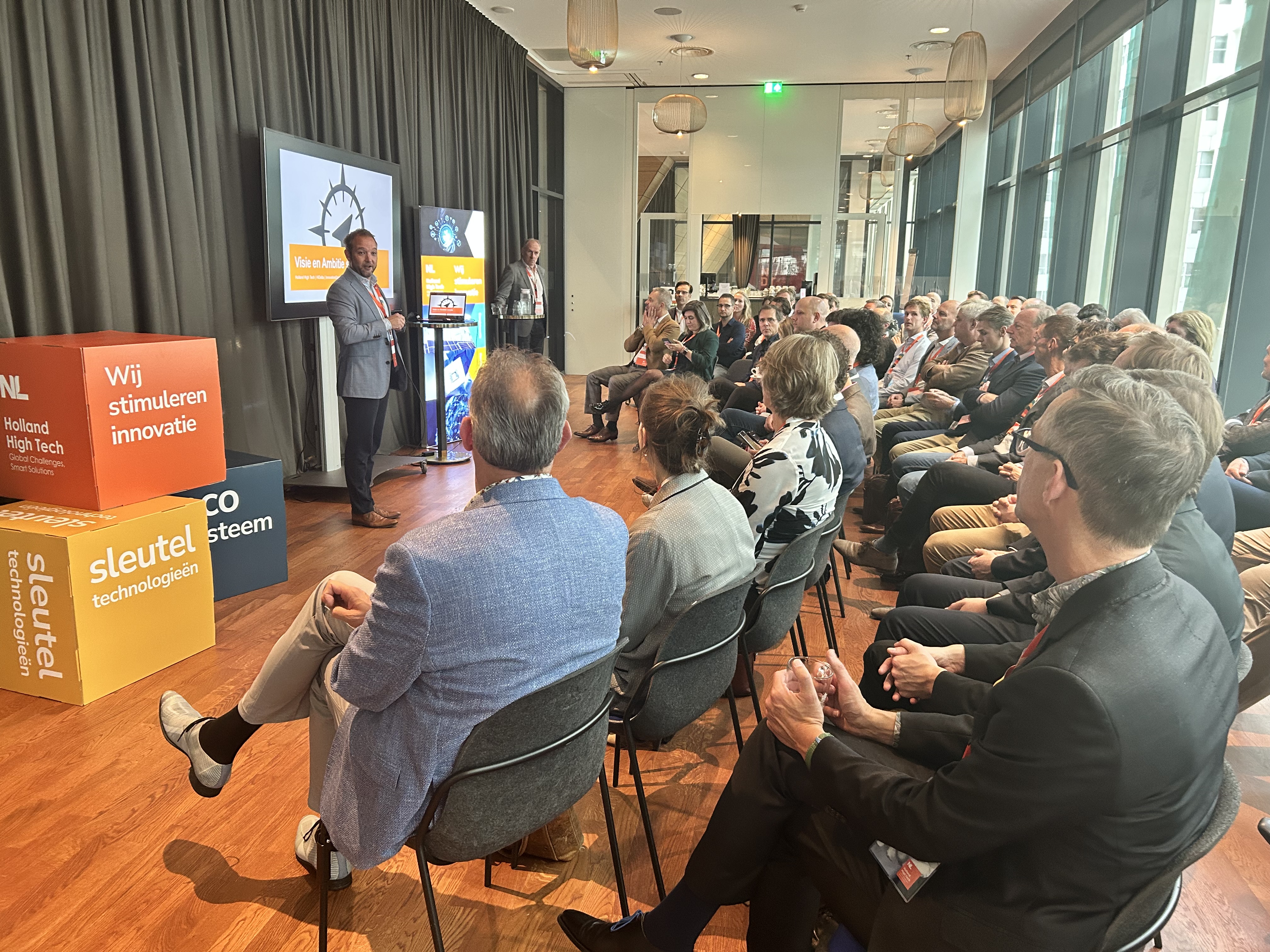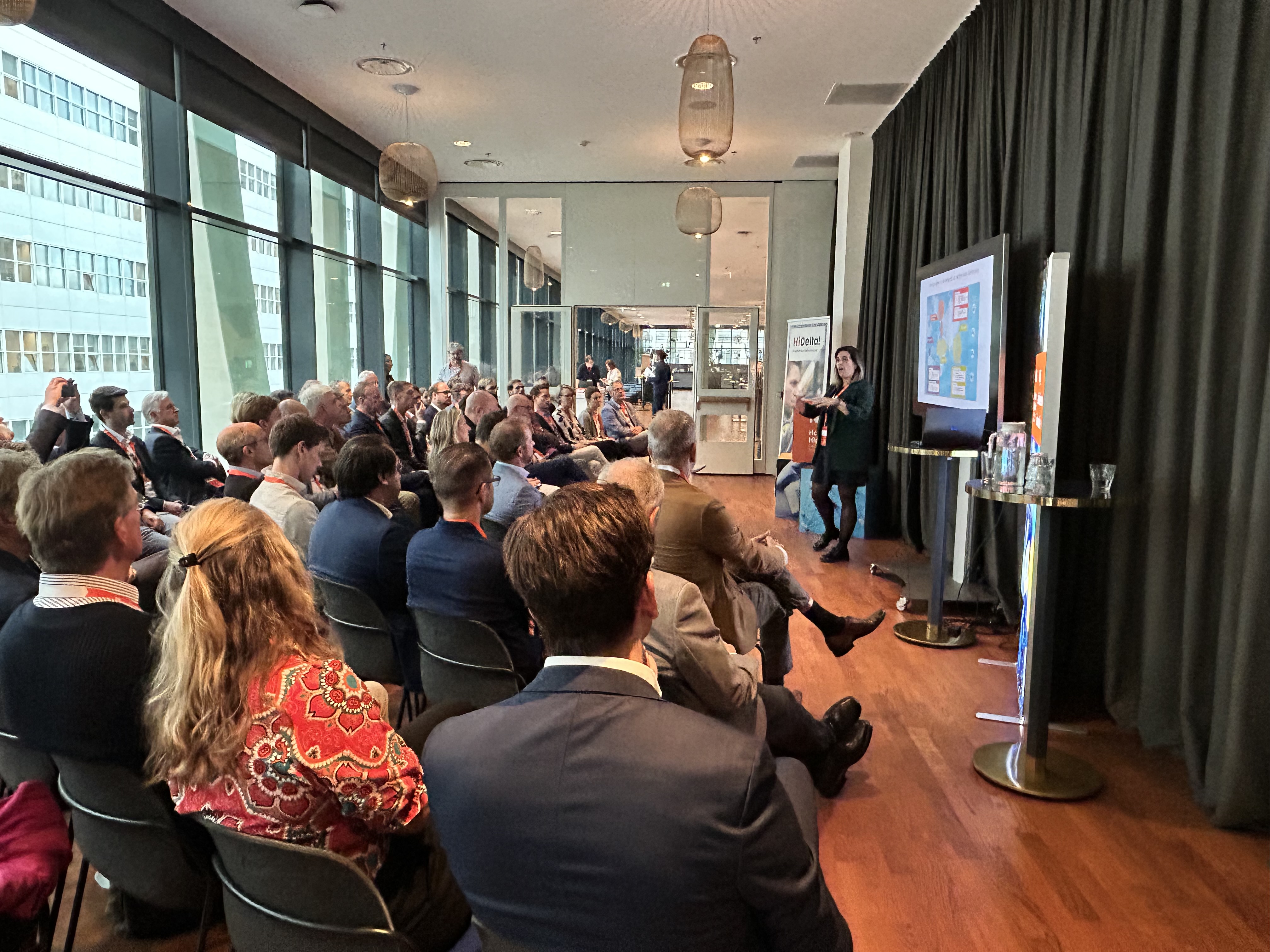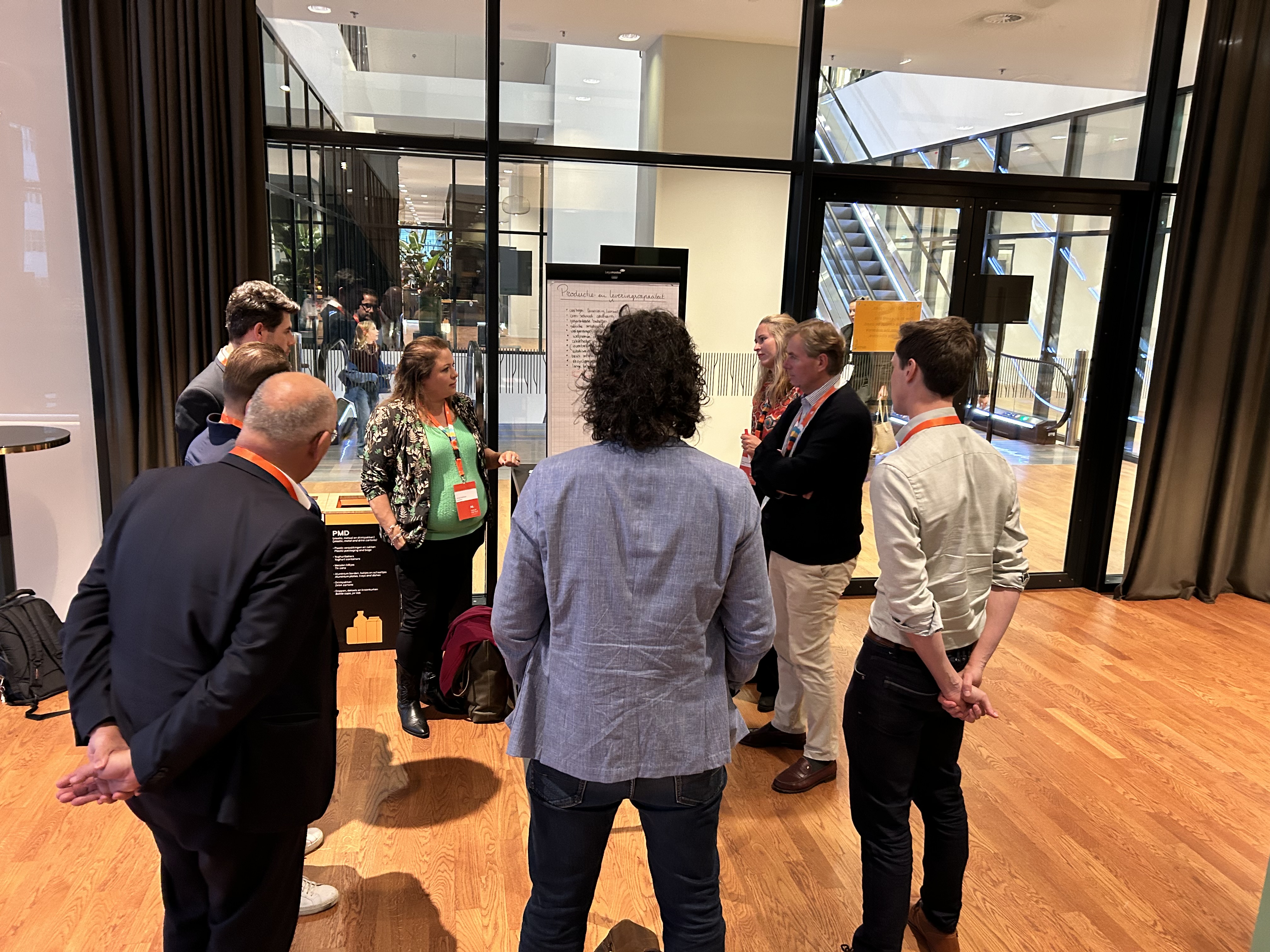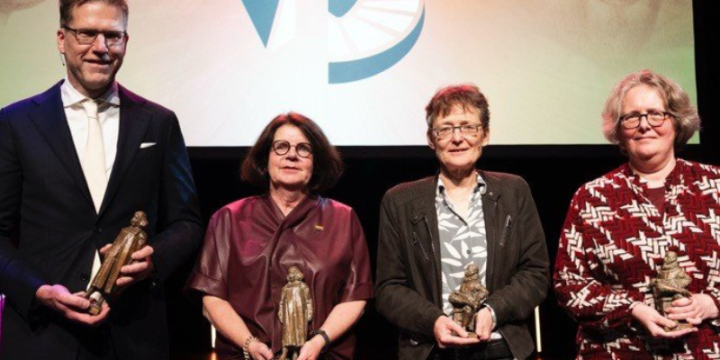Defense seeks high-tech solutions through better public-private partnerships
Protecting our freedom and democracy poses major challenges for Defence and other stakeholders in the security domain. Due to a rapidly changing world view, the need for innovation is great, as became apparent during the second Vision & Ambition Session 2024, in October in The Hague. We organised this together with our partners HiDelta (pooling of forces of the technological industry of South Holland) and InnovationQuarter (regional development company).
The business community and research organisations play an important role in meeting the need for innovation. With the Vision & Ambition sessions, Holland High Tech, or the top sector High Tech Systems and Materials (HHT), brings together leaders in high-tech and innovation to find solutions for major social challenges. How can governments, including Defence, optimally collaborate with the business community and research organisations to accelerate innovation, was a central question during the discussions in The Hague.
The security threat has increased significantly in recent years. “We used to have a model: green was peace, red was war. And in war, almost all rules are abolished. But now we are in orange,” says Hugo Leyte, strategic advisor on Innovation at the Ministry of Defence.
Look at cyber, we are actually already at war, but not when it comes to our regulations.
Situation is urgent
Not only is the cyber threat increasing. Drones are an example of new technology that is developing very quickly, as the war in Ukraine has shown. “What you come up with has a shelf life of about six or seven weeks. After that, something new has to come in the field of hardware or software,” says Leyte’s colleague Christien Foekens, senior policy advisor for Knowledge and Innovation, outlining the urgency of the situation. “We are looking into whether we can put out a tender to Dutch industry, which immediately includes that innovation development.” Foekens and Leyte also point to challenges in production capacity for military equipment and the desire to become more independent with regard to strategic raw materials and components.
This collaboration with industry and research organisations is not always easy. Leyte acknowledges that the Ministry of Defence is a very large and complex organisation, apart from the bureaucracy and regulations. All of this sometimes makes it difficult for suppliers to find out who they should contact. But the other way around, Defence also has difficulty bundling demand. Leyte: “I recently spoke to a company that had five people from Defence visiting in one day, and they didn’t know about each other.”
They are working hard to improve this situation, such as with coordination offices in regions. They are each given responsibility for a theme. For example, the office in Noord-Brabant is working with Brainport Eindhoven on the theme of optical communication. The coordination offices are also given a new role in certification. Leyte: “Defence normally only certifies if we also buy something. But we are now also going to certify products to give companies a better chance with foreign buyers. We actually have no direct interest in that, but we do have a joint interest in capacity development.”
Business case often difficult, dual use a good approach
The companies present indicate that it is often difficult to make a business case for a defence assignment. It often concerns very specific products, the costs of research and development are high, but the number of final orders is not large. That is why it is important to look at ‘dual use’ technology, where developments for military applications are also useful for civilian products. Conversely, Defence is also increasingly looking at innovations in the civilian market that can be valuable to Defence. The rapid development in drone technology is an example of this.
Stefan Morssink of HTC Parking & Security explained how his company developed a secure mobile gate for temporary military bases, the so-called speedgate. The walls of such a base consist of thick, high sandbags with an opening in between as an entrance. “There used to be a barrier in front of it. The speedgate has the same properties as the sandbags so that you cannot drive or shoot through it.” The doors fold open and closed very quickly and the whole thing can be transported as a container. HTC now also supplies the speedgate to parking garages and industrial estates, such as the port of Rotterdam.
Solution was ready immediately
CEO Jan van der Wel and his company Technolution took the opposite route. “We do highly classified security for the entire government. That ultimately also brings you into discussions with Defence. We kind of fell into it. When the question came, we were already so far along in the development that we could actually offer a solution right away.” Technolution started with the security of radio equipment that was purchased from American or Israeli manufacturers. “This then has to be made sovereignly secure. The encryption is done with a smart card that everyone knows from a mobile phone.” The company now also provides security for other communication facilities, such as 100 Gigabit connections between data centers.
Conflicting interests can easily arise during the process, according to Leyte's experience. It is therefore important to identify potential problems as soon as possible and to take them into account.
Financing available
For a contribution to the financing of innovative projects, HHT director Leo Warmerdam pointed out a number of general programs that are interesting specifically for the security domain. In total, Holland High Tech has around 45 million euros available per year for co-financing for public-private partnerships. In total, this amounts to at least 100 million euros in project turnover. “That is about something. With that we can make a difference.”
He says that ten strategic programs were initiated in 2024, which will run until 2027. A subsidy volume of 107 million is available over that four-year period. “In the coming months, four more strategic programs will be added, one of which focuses on the security domain. In a few weeks, we will announce a specific SME call on our website. The basic message for SMEs is: you innovate with one person, you get a second person, a researcher, financed by us for two years. 5 million is available for this.”
In addition, there are opportunities to participate in calls from the various National Growth Fund programs. The Maritime Masterplan, Polaris and 6G Future Network Services are the most obvious. “But I am convinced that there are also elements in other growth fund programs that are important for the security domain.”
Leyte announces that Defense is also paying attention to setting up financing instruments, such as the Security Fund (SEC-fund). This fund has 100 million available over the next seven years to support start-ups and innovative companies in the development of defense-related technologies.
Alternative financing needed
Criticism was also voiced during the subsequent brainstorming sessions. A number of the financing instruments are mainly focused on delivering products because they are related to the R&D budget of the supplier in question. “If you don’t have an R&D budget because you don’t develop a product, you don’t count,” one of the participants responded. “While we think we can make a valuable contribution. The industry consists of so much more than just product parties.”
More thought needs to be given to alternative financing models, which also support knowledge and services. The government can also pay more attention to simplifying licensing and security of supply. There is now haste and money available, but if, so to speak, all conflicts have died down in a year, the government will suddenly have less interest in a strong defense industry, was one of the critical comments.
The need to be able to innovate faster in the security domain is clear. A series of initiatives help to streamline public-private partnerships, but there is still a lot of work to be done, both on the organizational side and in terms of financing instruments.
Photos Vision and Ambition Session West









